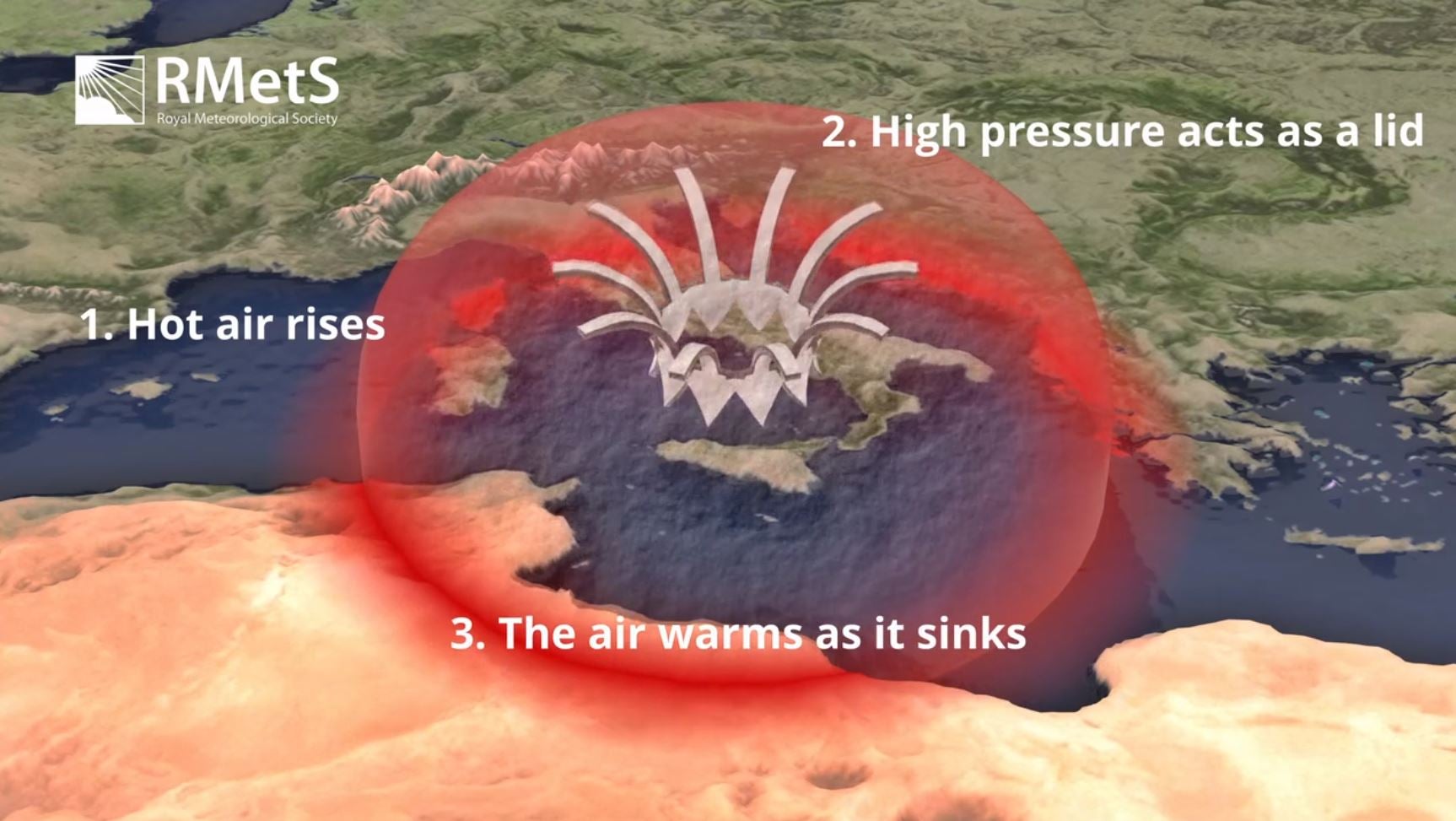Large swathes of the UK and Europe are sweltering through a heatwave, with England’s southeast set to hit temperatures of 35C and parts of Europe including Paris, Rome and Athens to near 40C.
The extended period of above-average temperatures and tropical nights with minimum temperatures staying above 20C could be exacerbated by a heat dome.
Below we look at how the weather event is sending temperatures soaring across Europe.
What is a heat dome?
A heat dome is created when a high pressure area stays over the same area for days or potentially weeks, trapping very warm air underneath it, like a lid on a saucepan. Because hot air expands, it creates a ‘dome’ that bulges out.
This weather phenomenon causes temperatures to become hotter and hotter, building through the day and rise above what is considered normal, since warm air becomes compressed over a smaller region.
The ground warms as well and moisture evaporates, the RMS says, making it easier for temperatures to continue to rise.
These weather systems and their prolonged heat also increase the risk of wildfire and heat-related health problems, the Royal Meteorological Society (RMS) said.

Often these pressure systems move east to west, the RMS explains. Sometimes they can be blocked when the jet stream of strong winds high in the atmosphere weakens.
AccuWeather lead international forecaster Jason Nicholls said last week that a strong area of high pressure had built over western Europe from Morocco, bringing high temperatures. That system has extended up through Spain and Portugal into France, and spread across Germany and Italy over the weekend.
Temperatures are expected to drop by the end of the week across much of Europe.

What is the definition of a heatwave?
A heatwave is simply a prolonged period of abnormally high temperatures. What is considered an abnormally high temperature varies from place to place.
Several countries issued heatwave alerts ahead of the weekend including Spain, which experienced temperatures of up to 42C in parts.
In France, the meteorological office has issued an orange heatwave alert for nearly the entire country with temperatures expected to reach “scorching levels”.
In Mediterranean cities and towns, the French meteorological office expects temperatures of up to 40C, while only regions near the English Channel and the border with Belgium will experience temperatures below 34C. Paris is forecast to reach 37C on Monday and Tuesday.
Lisbon is forecast to reach 41C on Monday, while temperatures in Rome are expected to peak at 37C on Wednesday and Thursday.
In the UK, temperatures could reach 35C in the southeast on Tuesday, Met Office forecaster Matthew Lenhert said. The June temperature record of 35.6C was last reached nearly 50 years ago, in 1976.







